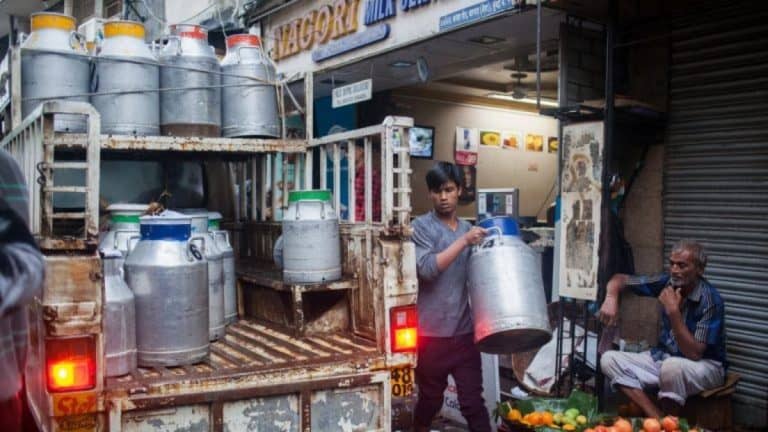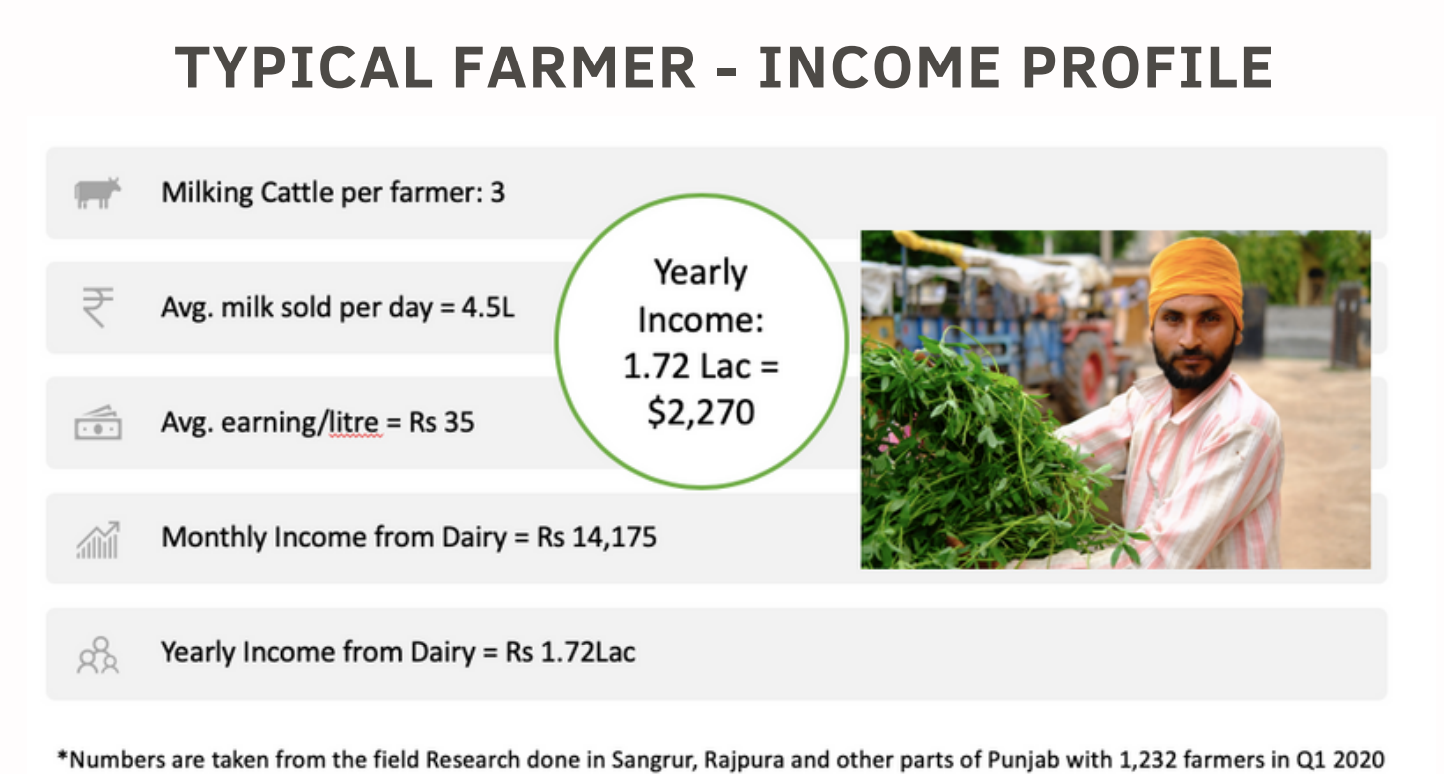
How AI can Help Indian Dairy Farmers
- Artificial Intelligence can be a game-changer for the dairy industry in India – if the right data can be made available to the right stakeholders.
- An open-source dairy data stack is required if we want to realize AI’s potential to help smallholder farmers.
- More dairy-centric government policies are needed.
In 2016, India surpassed the European Union to become the largest milk-producing nation in the world and currently produces about 25% of the world’s milk output. With a total of 100 million dairy farmers, most of whom own a small herd of two or three cows, the Indian dairy market represents a $225 billion market and is one of the world’s fastest-growing. India is also the world’s largest consumer of milk in the world, suggesting huge potential for the industry in the country.
Yet the market is highly fragmented and rife with issues including identity theft, the spread of disease and mistrust between farmers and insurance companies.
Here are four ways AI could transform the industry and improve the lives of smallholder farmers – and how public-private partnerships will be the key to ensuring their success.

Digital identity
Cattle in a lot of countries, including EU countries, the UK and the US, have “cattle passports,” which authorities use to track infectious disease outbreaks, ensure the effective rollout of government schemes, and make insurance claims. In practice, this means that many cattle are identified by tags punched into their ears. Not only are these tags painful for the animals, but are unreliable as well. In some developing countries, including India, farmers cut the cattle’s ears to commit identity fraud and make fraudulent insurance claims.
Cattle facial recognition, which is also called the Aadhar of cattle in India, is the perfect solution for this cattle identity problem. It is also a technically validated solution, thanks to the recent advancements in machine vision.
MoooFarm, an AgriTech start-up with the mission statement “to make farmers prosperous,” is working to produce the technology at scale and work with the government to build a robust cattle identity mechanism. This technology can become the foundation of multiple auxiliary services like cattle insurance, cattle loans and government subsidies. Other companies including Cainthus, Techvantage’s Moo-ID, and Stellapps, are also working to roll out a market-ready version of this product. These solutions can also improve the relationship between farmers and insurance companies. A meagre 9% penetration in the cattle insurance market points towards the fact that there is a huge amount of mistrust between the farmers and the insurance companies due to the high amount of identity fraud. Automated detection and inspection mechanism can thus help create more trust between farmers and insurance companies.
Health monitoring
Cattle health is the most important aspect of any dairy business, considering that it is directly connected with the milk output. Diseases like sub-clinical mastitis, one of the more common diseases in the dairy industry, cost the Indian dairy industry $1 billion annually. Currently, the cattle-health-monitoring industry is dependent upon IoT devices to collect real-time data of cattle including their walking patterns, rumination patterns and temperature changes. The IoT device that is most popular in the dairy industry is the collar, which goes around the neck of the cattle and transmits large amounts of data every second. This data can be further used to detect cattle heat symptoms, subclinical diseases, among others.
At MoooFarm, we are approaching this problem in a different way. We are working with Microsoft to create a product that uses machine vision to detect whether the cattle has subclinical mastitis using the images of its udder. The algorithm detects the change in markings or discoloration in the udder among many more features to make the prediction. We are also working on a project that involves measuring the Body Conditioning Score (BCS) just by using images of the cattle from three different angles.
How do I follow the Pioneers of Change Summit?
Cattle trading
Cattle trading is another area that is currently highly unorganized and has a huge scope of improvement. The price of cattle is currently being decided on the basis of negotiations between the buyers and the sellers. If we can get the history of a cattle, including information about milk productivity, age, health records, sire and dam, we can create a live price exchange of the cattle using machine learning models wherein cattle price will be displayed like stocks in an exchange, and buyers and sellers interact through a transparent platform.
Financial Inclusion
Financial inclusion of India’s rural population, or banking the unbanked, has been a big challenge despite several efforts from government policies like Pradhan Mantri Jan Dhan Yojana, which have increased the banked population from 35% to 80% overall. Still, around 72% of the transactions in India happen via cash.
When we talk about rural India, the numbers are even worse, and the dairy sector in the country is highly fragmented, with the organized segment accounting for approximately 20% of the market. With no digital financial footprints, many farmers, who are in dire need of credit, are unable to avail credit from formal sources. Informal sources of credit sometimes worsen the condition of the farmer because of high-interest rates and inhumane methods of recollection.
AI can help solve this problem by using indirect ways of calculating the creditworthiness scores of farmers and giving out loans to them on the basis of those scores. Multiple companies in the industry are using unconventional data like psychometric questionnaires, social media and network connections, phone/app usage, SMS, phone calls, and similar datasets to calculate how creditworthy farmers are and extend loans to them. (At MoooFarm, we are working on a product called MoooInclusive which is a bundle containing credit and Insurance products.)
Overcoming roadblocks
There are three major challenges to achieving the AI vision of India’s dairy sector.
First, one of the biggest roadblock to these innovations is lack of dataset availability. There are no standardized datasets that can be used to develop AI solutions like health monitoring, financial products, and cattle trading marketplace.
For these solutions to exist, the government and private organizations must work together to create a dairy data stack. The government can contribute by providing farmer-specific livestock profiling data, cattle genetics data, and milk yield data (from cooperatives). Private organizations can contribute with financial history datasets, cheap IoT devices for smallholder farmers, and up-to-date technology resources.
Second, most government policies and initiatives are implemented in the crop agriculture sector, not the dairy sector. Since the government sees dairy as the secondary source of income for the farmers, new policies are first deployed in the crop agriculture sector and then transitioned to dairy. For example, the PKCC (Pashu Kisan Credit Card for animal husbandry and dairy) was launched 20 years after the KCC (Kisan Credit Card for crop agriculture), and the National Digital Agriculture Blueprint agri-stack scheme, a database for farmers, did not include open-source dairy data in the first phase of its launch.
Third, it can be difficult to extend high-end technology solutions to the rural population. For AI to disrupt India’s dairy industry and help farmers, governments must create ecosystems that enable innovators to improve the lives and incomes of smallholder farmers. The best way forward is to build multi-stakeholder partnerships that can tap into these opportunities and collectively create the pathway to an AI-enabled dairy market in India.
Source: The article is extracted from The Print, 14 November 2020.
